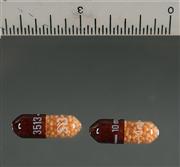Prescription Stimulants
 What are the street names/slang terms for Prescription Stimulants?
What are the street names/slang terms for Prescription Stimulants?
Adderall, Dexedrine, Ritalin.
What are Prescription Stimulants?
A class of drugs that enhance brain activity. Prescription stimulants were used historically to treat asthma, obesity, neurological disorders, and a variety of other ailments, before their potential for abuse and addiction became apparent.
What do they look like?
Tablets and capsules.
How are they used?
Medically, they are now prescribed for only a few health conditions, including narcolepsy, attention-deficit hyperactivity disorder and short-term treatment of obesity. They are swallowed and may be injected when abused.
What are their short-term effects?
Stimulants increase the amount of norepinephrine and dopamine in the brain, which increases blood pressure and heart rate, constricts blood vessels, increases blood glucose, and increases breathing. Effects can feel like an increase alertness, attention, and energy along with a sense of euphoria. There is also the potential for cardiovascular failure (heart attack) or lethal seizures.
What are their long-term effects?
Stimulants can be addictive in that individuals begin to use them compulsively. Taking high doses of some stimulants repeatedly over a short time can lead to feelings of hostility or paranoia. Additionally, taking high doses of a stimulant may result in dangerously high body temperatures and an irregular heartbeat. There is also the potential for cardiovascular failure (heart attack) or lethal seizures.
What is their federal classification?
Schedule II
Source
DEA